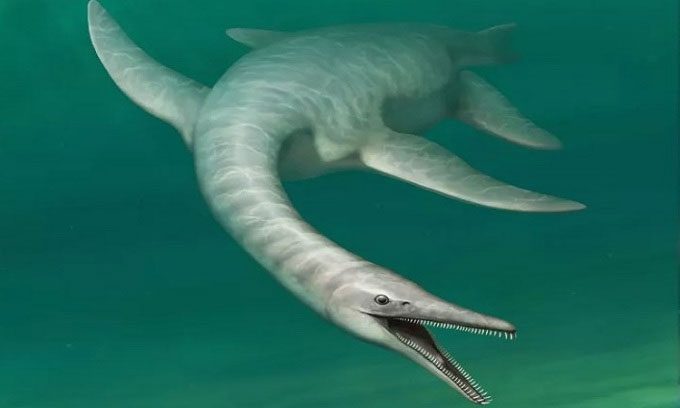For tens of millions of years, a colossal marine reptile swam through the waters that are now Wyoming, swaying its serpent-like neck and using its crocodile-like jaws to snap up fish and small marine creatures.
Paleontologists discovered fossils of this sea monster in 1995 during an excavation at the uppermost layer of Pierre Shale, a geological formation dating back to the early Cretaceous period (approximately 101 – 66 million years ago). Unlike other mosasaurs, this creature exhibits several distinctive features compared to its relatives. The research team announced the discovery of this new species on September 26 in the journal iScience.

Reconstruction of Serpentisuchops pfisterae. (Photo: Nathan Rogers)
According to Walter Scott Persons IV, a paleontologist at the University of Charleston, South Carolina, and the lead researcher, mosasaurs typically have long necks with small heads or short necks and elongated jaws similar to crocodiles. However, in this case, the creature resembles a hybrid between the two forms.
The paleontologists named the new species Serpentisuchops pfisterae, which means “crocodile-faced serpent.” The 7-meter-long fossil of S. pfisterae has been displayed at the Glenrock Paleontology Museum near Casper, Wyoming, since its excavation 25 years ago. For many decades afterward, experts conducted detailed studies of the animal’s skeleton, which includes a complete lower jaw, a large skull, an intact neck, a vertebral column, most of the tail, and several ribs. The only parts the research team lacked were the limbs and flippers used for swimming by S. pfisterae.
At the excavation site, researchers also found 19 teeth, with only one located in the jaw of the specimen, while the others were scattered around the skeleton. However, according to the research findings, the presence of the teeth in the jaw indicates that the teeth belonged to the specimen rather than another mosasaur.
The conical and tall teeth are very smooth and lack serrations, indicating that the creature could not bite through thick bone. These teeth served a singular function: to grasp and hold prey. It is likely that S. pfisterae hunted slippery prey that could not fight back, such as small fish or cephalopods.





















































